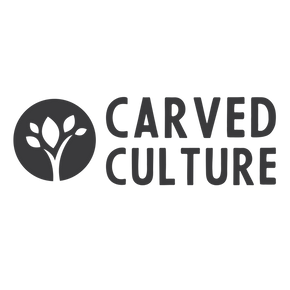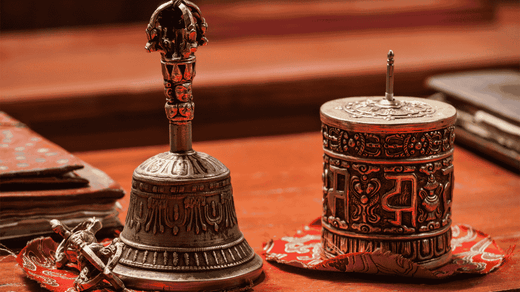The saying "you are what you eat" holds significant weight about food. While many foods are nourishing and beneficial, others can seriously impact your health or even lead to fatal consequences. This article will explore 25 of the deadliest foods you should think twice about before consuming. This includes plants that are toxic, dishes that are not prepared hygienically, and poisonous animals.
1. Fugu (Pufferfish)

This is a Japanese delicacy, but you should be aware of the risks of eating this fish. If you ingest just a small amount of tetrodotoxin, which is contained in the fish, it can kill you. This toxin is found in the fish's organs and skin, and if ingested, it will cause respiratory failure, leading to death. It is important that you know the risks of this fish before consuming it. To prepare and serve Fugu, chefs have to go through extensive training to gain a license. People should only eat this food if the chef holds this license.
2. Ackee
Ackee, Jamaica's national fruit, can be deadly when unripe due to hypoglycin A, a toxin that triggers severe vomiting and hypoglycemia. It's important to understand how to correctly identify if the ackee is ripe and can be consumed. If you make the wrong decision, it could have severe consequences. Only the yellow flesh of fully ripened ackee is safe to eat after thorough cooking.
3. Cassava

This root vegetable is popular in tropical regions. Cassava contains cyanogenic glycosides, which release cyanide if they are eaten when they are raw or not cooked enough. It is important to learn how to peel and cook the cassava so that the toxins are neutralised, making them no longer harmful.
4. Elderberries
While elderberries are used in syrups and jams, their seeds and unripe berries contain cyanogenic glycosides that can cause nausea, vomiting, and even coma when consumed raw. To safely enjoy elderberries, they must be cooked and processed to remove the seeds and neutralise the toxins.
5. Raw Cashews

A toxin known as urushiol is contained in truly raw cashew nuts in their shells. The cashews that we generally buy have been steamed to remove this toxin, making them safe to eat. This toxin can cause stomach pain and allergic reactions. You should ensure you buy your cashews from a reputable seller or store to avoid getting ill.
6. Uncooked Kidney Beans
Kidney beans can be toxic to humans as they contain hemagglutinin, which is a toxin that can cause nausea, vomiting, and diarrhoea if eaten raw or undercooked. To eliminate the toxin and make the beans safe to eat, they must be soaked for at least five hours and boiled at a rolling boil for ten minutes.
7. Sannakji (Live Octopus)

Sannakji, a Korean dish made from live octopus, poses a choking hazard because the tentacles may still move and become lodged in the throat. To avoid this happening, the person consuming this has to chew thoroughly to ensure the tentacles are chopped up. You should only eat this dish if you are in a restaurant that has a great reputation.
8. Raw Milk
Though some laud raw milk for its supposed benefits, it can contain harmful bacteria like Salmonella, E. coli, and Listeria. These pathogens can lead to serious foodborne illness. It's safest to consume only pasteurised milk and to avoid raw dairy from unregulated sources.
9. Rhubarb Leaves

Rhubarb stalks are safe to consume, but the leaves contain toxic oxalic acid, which can cause breathing difficulties, seizures, and kidney failure. Cooking does not remove the toxin, so only the stalks should be consumed, and leaves must always be discarded.
10. Mushrooms
Wild mushrooms, including the deadly Amanita phalloides (death cap), can cause liver failure and death. Only experienced foragers or mycologists should collect mushrooms, and unknown varieties should never be consumed due to the high risk of severe poisoning.
11. Green Potatoes
Green potatoes contain solanine, a toxin that develops when potatoes are exposed to light. Solanine can cause vomiting, diarrhoea, and neurological effects. To prevent solanine formation, discard any green or sprouted parts and store potatoes in a dark, cool place.
12. Nutmeg

Nutmeg is a common spice in small amounts, but in large amounts, it can cause toxicity due to myristicin, leading to hallucinations, dizziness, and even death. Always use nutmeg sparingly and avoid consuming it in large doses.
13. Horse Meat
This type of meat can harbour a lot of harmful bacteria and parasites. This includes E. coli and salmonella. Another factor is that horses are often treated with drugs that are not safe for humans to consume. It's important to only eat horse meat that has been cooked thoroughly and only from stores or farms that have a good reputation.
14. Bitter Almonds
Bitter almonds contain amygdalin, which can convert into cyanide when consumed. Just a small number of raw, bitter almonds can be fatal. To stay safe, stick to sweet almonds and never consume bitter almonds raw or unprocessed.
15. Unwashed Fruits and Vegetables
It's a well-known fact that fruit and vegetables need to be washed before eating them, even if you are cooking them too. This is because they can harbour harmful bacteria and pesticide residue. It's important to wash your products, and if they are able to be peeled, then you should do so.
16. Raw Eggs

Raw eggs can harbour Salmonella bacteria, making them risky to consume, especially for pregnant women and the elderly. To reduce risk, eggs should be cooked thoroughly until the yolk and white are firm, and raw preparations should be avoided.
17. Ice Cream Made with Raw Eggs
Homemade ice cream recipes that recommend raw eggs pose the same risk of Salmonella contamination as other products that contain raw eggs. Use pasteurised eggs or a cooked custard base to make ice cream safely without compromising health.
18. Peanuts

Peanuts can trigger life-threatening allergic reactions in individuals who are sensitive to them, including anaphylaxis. Individuals with peanut allergies must avoid exposure and exercise caution when it comes to cross-contamination in food and during food preparation.
19. Fish High in Mercury
Fish like king mackerel, sharks, and swordfish often contain high mercury levels, which can be particularly dangerous for young children and pregnant women, as it can affect the nervous system. Select fish like salmon as it contains less mercury.
20. Caffeine Overload

The effects of drinking a large amount of caffeine can include an increase in anxiety and insomnia, which can cause someone a lot of distress. High caffeine levels can be found in various drinks such as tea and coffee. Energy also contains a high amount. It's important to reduce the amount you drink and avoid these drinks at night.
Lethal dose for most adults is estimated around 5–10 g of caffeine (about 30–60 cups of coffee in a short time). Energy powders and pills make overdose more likely.
21. Uncooked Fish
Dishes, such as sushi and sashimi, are created using a range of raw fish. They can contain parasites and bacteria due to the fish not being cooked. Raw fish can be fine to eat, although it has to be from a responsible source. They will need to have followed the correct safety procedures to ensure the fish is safe for humans to eat.
22. Processed Meats

Hot dogs and bacon are classified as processed meats. They contain preservatives linked to cancer and high sodium levels. To reduce health risks, they should be limited, with preference given to fresh, lean meats or plant-based alternatives.
23. Fast Food
A popular choice for people, although it is often high in sugar, salt, and fat. All of these factors are known to cause obesity and other conditions like heart disease and diabetes. If you consciously try to avoid or eat less of these foods, you will be able to limit your intake. Opt for salads or grilled meats instead.
24. Canned Foods with BPA
BPA can be found on many canned goods. It's a chemical that is associated with hormonal imbalances and reproductive issues. To reduce exposure to this chemical, select products that say BPA-free on the label. Another way to limit the BPA is to use fresh and frozen food instead of canned products.
25. Foods with Artificial Additives

Foods with artificial additives—such as synthetic colours, preservatives, and flavour enhancers—are common in processed products and may pose health risks over a period of time. If you read the ingredient labels, you can choose a product that is less modified, which will help you to lower your consumption. There are many foods that are completely safe to enjoy, but staying informed will help you avoid potential dangers.







